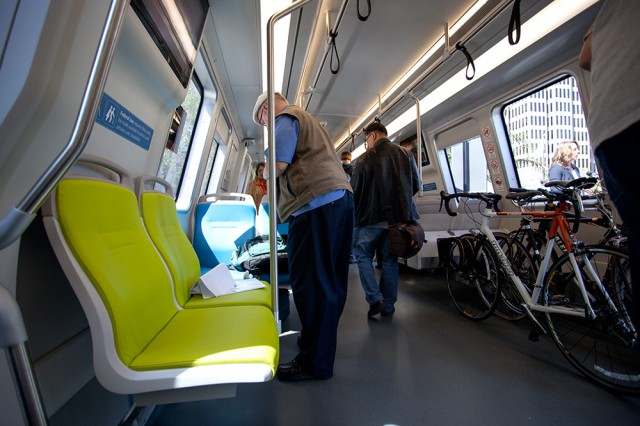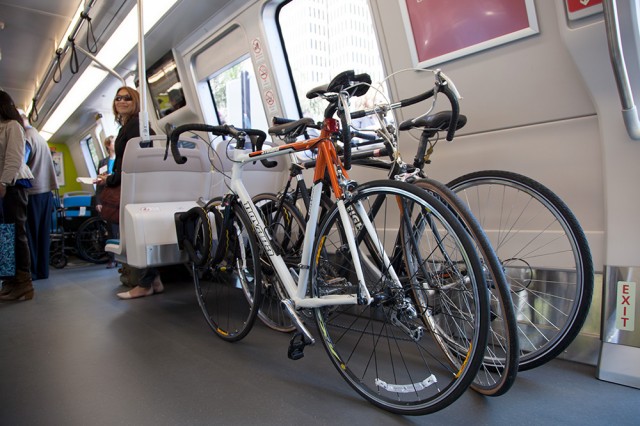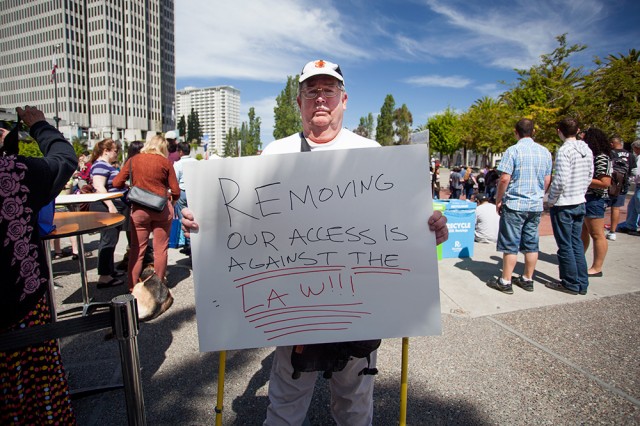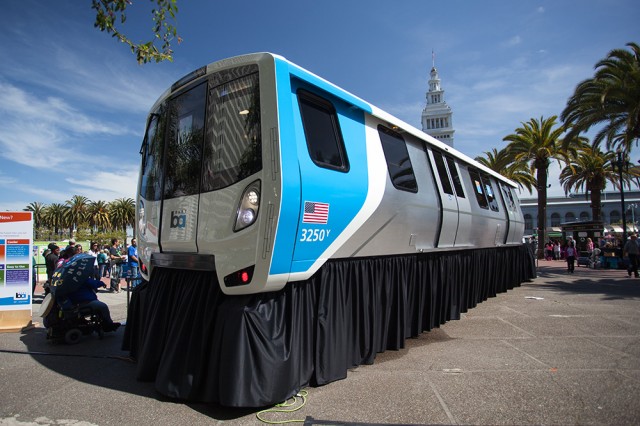
BART unveiled its "Fleet of the Future" train cars on Wednesday, inviting the public to tour a model train in downtown San Francisco. The car was greeted with mixed reviews. The most pointed criticism came from riders with disabilities, who argued that the design provides less accessibility for disabled passengers.
Before the unveiling, Bob Planthold was resting on a pair of forearm crutches with a group of disabled people next to the model train car. Planthold came to the unveiling to voice his displeasure over the addition of a three-pronged, Y-shaped pole located near the door of the new cars. He says the pole will encourage people to stand near the door, making it difficult for disabled riders to pass.
"The width is narrow for somebody who uses a wheelchair, somebody who uses a walker, somebody who is navigating with a guide dog," said Planthold. "That's why we're here today – so the larger public gets to see how poor and troubling is this design."
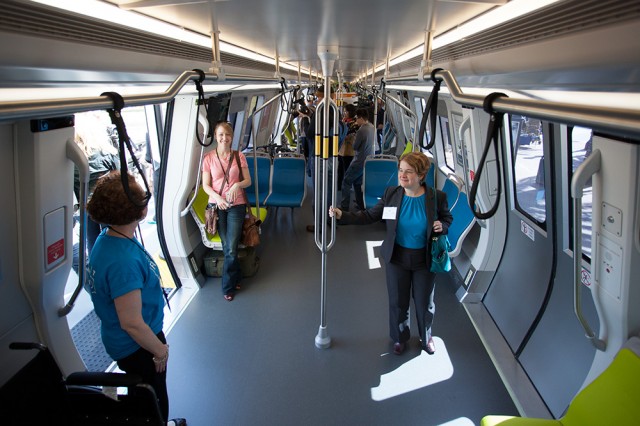
Joel Keller, president of the BART board of directors, addressed questions of accessibility as he took the media on a tour of the cars. "This issue has been before our accessibility task force, it's been discussed and debated," he said. "We believe there is enough room for this to provide access."
With an average age of 30 years, BART's current fleet is the oldest of any rapid transit system in the country. The agency has already ordered 775 new cars at a cost of $2.5 billion, and the agency is looking to raise that number to 1,000. Ten test trains will be rolled out in 2015, and the new trains are expected to go into service in 2017.
